= Thelocactus hexaedrophorus var. fossulatus (Scheidw.) Backeb.
Cactaceae (Backeberg) 5: 2800. 1961 Backeb.
Accepted Scientific Name: Thelocactus hexaedrophorus (Lem.) Britton & Rose
Bull. Torrey Bot. Club 1922, xlix. 251
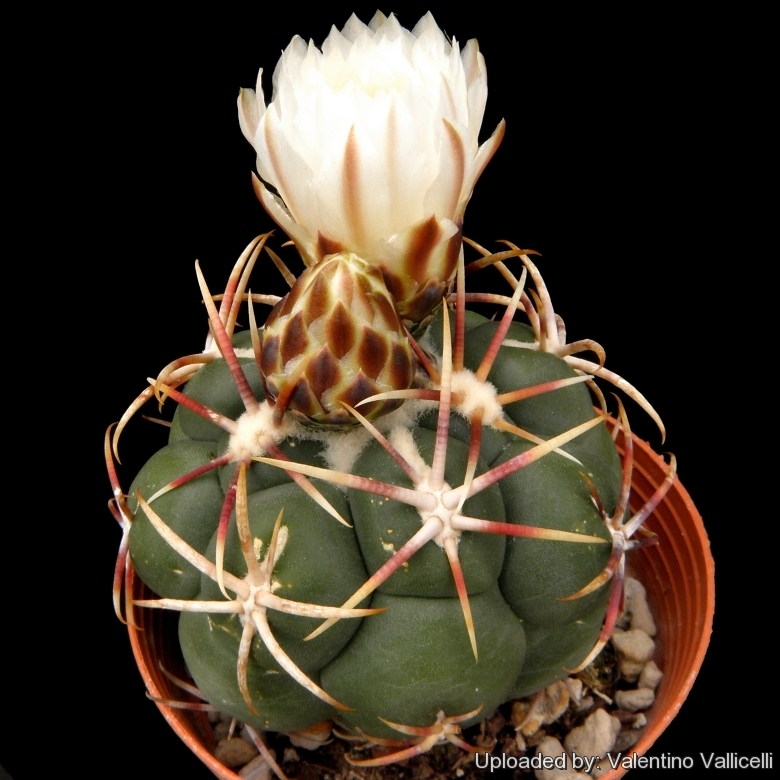
Echinocactus fossulatus (Thelocactus hexaedrophorus var. fossulatus) Photo by: Valentino Vallicelli
Origin and Habitat: San Luis Potosi Nuevo León, Mexico.
Altitude: 1500-1700.
Habitat: It grows on gentle limestone hill slopes and terraces in the Chihuahuan Desert, savanna, and grasslands together with Gymnocactus knuthianusSN|12746]]SN|12746]].
Synonyms:
See all synonyms of Thelocactus hexaedrophorus
Description: Thelocactus hexaedrophorusSN|10830]]SN|10830]] var. fossulatus is one of the old controversial geographical forms of the variable Thelocactus hexaedrophorusSN|10830]]SN|10830]] that distinguishes for the usually longer and brighter coloured spines (red, white and amber coloured). However it look very similar to other varieties of Thelocactus hexaedrophorusSN|10830]]SN|10830]] which are linked one to each others by populations of plants with intermediate characteristics. Nowadays all them are thought to belong to a unique polymorphic species with some individual covered in fine white hairs spine, while others do not. Such variations has led to establishment of several unnecessary names for this species.
Habit: Usually solitary, clustering only after many years, from the base
Stem: Globoid blue-green up to 20 cm in diameter (or more)
Ribs: Spiralling divided into fat, poligonal-rounded tubercles.
Spines: 1 red central spines and 4-6 reddish-gray-white radial spines per areole They are thick, long and sharp of in length up to 6 cm long. The brightness of the colouration depends on the clone. The best spined specimen are very beautiful and sought after by cactus impassioned.
Flowers: 10 cm in diameter pure white, white/cream or pale pink with yellow throat and centres. Petals may have a darker pink midrib.
Subspecies, varieties, forms and cultivars of plants belonging to the Thelocactus exaedrophorus group
 Thelocactus hexaedrophorus (Lem.) Britton & Rose: (subsp. hexaedrophorus) has hemispheric tubercles, 0-1 reddish central spine, 4-6 reddish radials, and flowers 4-5.5 cm Ø. Distribution: widespread in San Luis Potosi, Tamaulipas, and Nuevo Leon.
Thelocactus hexaedrophorus (Lem.) Britton & Rose: (subsp. hexaedrophorus) has hemispheric tubercles, 0-1 reddish central spine, 4-6 reddish radials, and flowers 4-5.5 cm Ø. Distribution: widespread in San Luis Potosi, Tamaulipas, and Nuevo Leon. Thelocactus hexaedrophorus var. droegeanus (Hildm. ex K.Schum.) Pilbeam: has ash-grey compressed, closely packaged tubercles, shorter spines and small flowers. Distribution: La Bonita, south of Matehulla in San Luis Potosi.
Thelocactus hexaedrophorus var. droegeanus (Hildm. ex K.Schum.) Pilbeam: has ash-grey compressed, closely packaged tubercles, shorter spines and small flowers. Distribution: La Bonita, south of Matehulla in San Luis Potosi. Thelocactus hexaedrophorus var. fossulatus (Scheidw.) Backeb.: Usually solitary, clustering only after many years, from the base It has 1 red central spine and 4-6 reddish-gray-white radial spines per areole They are thick, long and sharp.
Thelocactus hexaedrophorus var. fossulatus (Scheidw.) Backeb.: Usually solitary, clustering only after many years, from the base It has 1 red central spine and 4-6 reddish-gray-white radial spines per areole They are thick, long and sharp. Thelocactus hexaedrophorus var. fossulatus cv. Long spines (Japan) (Scheidw.) Backeb.: Selected cultivar immediately distinguished from the other Thelocacti of this grou for the very strong, long and colourful spines.
Thelocactus hexaedrophorus var. fossulatus cv. Long spines (Japan) (Scheidw.) Backeb.: Selected cultivar immediately distinguished from the other Thelocacti of this grou for the very strong, long and colourful spines. Thelocactus hexaedrophorus subs. kvetae Chvastek & Halda: has flattened discoidal bodies, bright purple-pink coloured flowers and larger seeds. Distribution: Central Mexico, San Luis Potosi [near Rio Verde].
Thelocactus hexaedrophorus subs. kvetae Chvastek & Halda: has flattened discoidal bodies, bright purple-pink coloured flowers and larger seeds. Distribution: Central Mexico, San Luis Potosi [near Rio Verde]. Thelocactus hexaedrophorus var. labouretianus (K.Schum.) Pilbeam: grey stems, white pink flowers, and nice spination. At first the plants have larger tubercles that may become closely packaged as the plant gets older.
Thelocactus hexaedrophorus var. labouretianus (K.Schum.) Pilbeam: grey stems, white pink flowers, and nice spination. At first the plants have larger tubercles that may become closely packaged as the plant gets older. Thelocactus hexaedrophorus subs. lloydii (Britton & Rose) N.P.Taylor: has delta-shaped tubercles, 1-3 reddish central spines, 6-8 reddish white to brownish radials, and flowers 3,3-3,6 cm Ø. Distribution: Zacatecas.
Thelocactus hexaedrophorus subs. lloydii (Britton & Rose) N.P.Taylor: has delta-shaped tubercles, 1-3 reddish central spines, 6-8 reddish white to brownish radials, and flowers 3,3-3,6 cm Ø. Distribution: Zacatecas. Thelocactus hexaedrophorus subs. lloydii f. major: has very long ( up to 8 cm long) central spines, more numerous (6-8) radials, and pure white flower. Distribution: San Luis Potosí and Nuevo Leon.
Thelocactus hexaedrophorus subs. lloydii f. major: has very long ( up to 8 cm long) central spines, more numerous (6-8) radials, and pure white flower. Distribution: San Luis Potosí and Nuevo Leon. Thelocactus hexaedrophorus subs. lloydii cv. monstruosus: has firm, rubbery-textured glaucous green stems, the surface is naked or with few scattered spine clustes.
Thelocactus hexaedrophorus subs. lloydii cv. monstruosus: has firm, rubbery-textured glaucous green stems, the surface is naked or with few scattered spine clustes. Thelocactus hexaedrophorus var. paradensis Pilbeam: It is a white flowering form of Thelocactus hexaedrophorus subs. lloydii. It is known in cultivation only.
Thelocactus hexaedrophorus var. paradensis Pilbeam: It is a white flowering form of Thelocactus hexaedrophorus subs. lloydii. It is known in cultivation only.
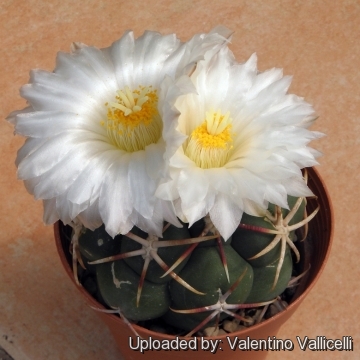 Echinocactus fossulatus (Thelocactus hexaedrophorus var. fossulatus) Photo by: Valentino Vallicelli
Echinocactus fossulatus (Thelocactus hexaedrophorus var. fossulatus) Photo by: Valentino Vallicelli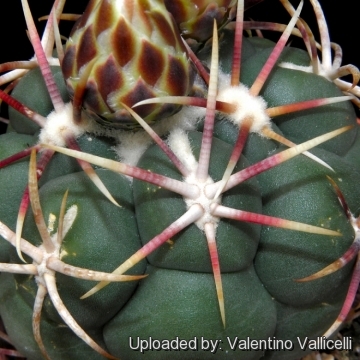 Echinocactus fossulatus (Thelocactus hexaedrophorus var. fossulatus) Photo by: Valentino Vallicelli
Echinocactus fossulatus (Thelocactus hexaedrophorus var. fossulatus) Photo by: Valentino Vallicelli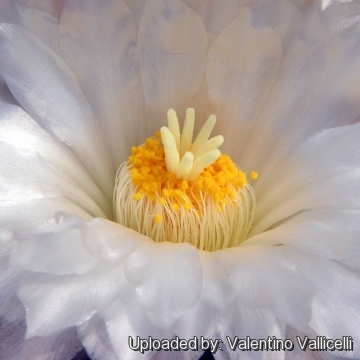 Echinocactus fossulatus (Thelocactus hexaedrophorus var. fossulatus) Photo by: Valentino Vallicelli
Echinocactus fossulatus (Thelocactus hexaedrophorus var. fossulatus) Photo by: Valentino Vallicelli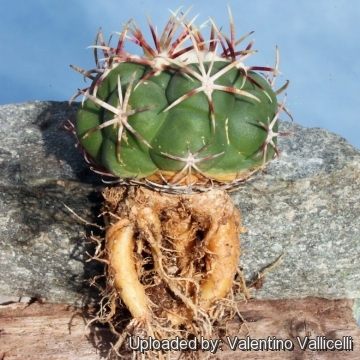 Echinocactus fossulatus (Thelocactus hexaedrophorus var. fossulatus) Photo by: Valentino Vallicelli
Echinocactus fossulatus (Thelocactus hexaedrophorus var. fossulatus) Photo by: Valentino Vallicelli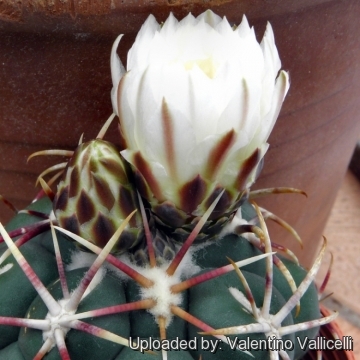 Echinocactus fossulatus (Thelocactus hexaedrophorus var. fossulatus) Photo by: Valentino Vallicelli
Echinocactus fossulatus (Thelocactus hexaedrophorus var. fossulatus) Photo by: Valentino Vallicelli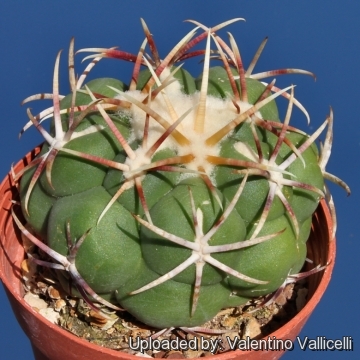 Echinocactus fossulatus (Thelocactus hexaedrophorus var. fossulatus) Photo by: Valentino Vallicelli
Echinocactus fossulatus (Thelocactus hexaedrophorus var. fossulatus) Photo by: Valentino VallicelliCultivation and Propagation: Thelocactus hexaedrophorusSN|10830]]SN|10830]] var. fossulatus is easy to cultivate and recommended for any collection that needs lots of light with ample airflow.
Growth rate: It is a small growing, but easily flowering species. It offset from the base and can fill a 25 cm pot in just a few years given the best conditions.
Soils: It likes very porous standard cactus mix soil with little organic matter (peat, humus).
Repotting: Repotting every 2-3 years. It will need a pot with sufficient depth to allow the tap root. As it is especially prone to rot under-pot in a smaller container filled with very porous compost. Use pot with good drainage.
Watering: Water regularly in summer, but do not overwater (very wet-sensitively, especially in light of its succulent root system). Its roots are easily lost in pots that stay damp for any length of time. Keep dry with ample airflow in winter. In the rest period no high atmospheric humidity!! Care must be taken with watering as they tends to become swollen and untidy in growth habit if given too much water and shade.
Fertilization: During the growing season enrich the soil using a fertilizer rich in potassium and phosphorous, but poor in nitrogen, because this chemical element doesn’t help the development of succulent plants, making them too soft and full of water.
Hardiness: Reputedly sensitive to frost , but less so if kept on the dry side prior to, and during, cold weather (hardy to -7° C for short periods). However some warmth throughout the year will increase the grower's success (minimum 5° to 8°C during rest season).
Exposition: Outside bright sun, filtered sunlight or afternoon shade, inside it needs bright light, and some direct sun. Subject to sunburn if exposed to direct sun for too long. Tends to bronze in strong light, which encourages flowering and heavy wool and spine production.
Uses: It is an excellent plant for container growing. It always looks good and stays small. It look fine in a cold greenhouse and frame.
Pests & diseases: It may be attractive to a variety of insects, but plants in good condition should be nearly pest-free, particularly if they are grown in a mineral potting-mix, with good exposure and ventilation. Nonetheless, there are several pests to watch for:
- Red spiders: Sensitive to red spider mite. Overhead watering is helpful in controlling mites.
- Mealy bugs: Occasionally mealy bugs they develop aerial into the new growth among the wool with disfiguring results, but the worst types develop underground on the roots and are invisible except by their effects.
- Scales: Scales are rarely a problem.
- Rot: Rot it is only a minor problem with cacti if the plants are watered and “aired” correctly. If they are not, fungicides won't help all that much.
Reproduction: Nearly always from seed, since the plant rarely produces plantlets.

















